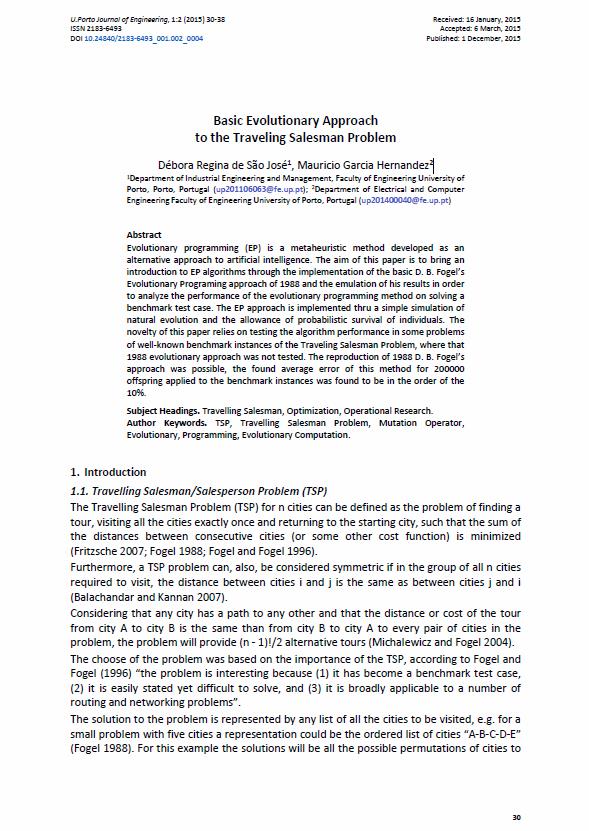Basic Evolutionary Approach to the Traveling Salesman Problem
Main Article Content
Abstract
Evolutionary programming (EP) is a metaheuristic method developed as an alternative approach to artificial intelligence. The aim of this paper is to bring an introduction to EP algorithms through the implementation of the basic D. B. Fogel’s Evolutionary Programing approach of 1988 and the emulation of his results in order to analyze the performance of the evolutionary programming method on solving a benchmark test case. The EP approach is implemented thru a simple simulation of natural evolution and the allowance of probabilistic survival of individuals. The novelty of this paper relies on testing the algorithm performance in some problems of well-known benchmark instances of the Traveling Salesman Problem, where that 1988 evolutionary approach was not tested. The reproduction of 1988 D. B. Fogel’s approach was possible, the found average error of this method for 200000 offspring applied to the benchmark instances was found to be in the order of the 10%.
Downloads
Article Details
Authors who publish with this journal agree to the following terms:
- Authors retain copyright and grant the journal right of first publication with the work simultaneously licensed under a Creative Commons Attribution License that allows others to share the work with an acknowledgement of the work's authorship and initial publication in this journal.
- Authors grant the journal the rights to provide the article in all forms and media so the article can be used on the latest technology even after publication and ensure its long-term preservation.
- Authors are able to enter into separate, additional contractual arrangements for the non-exclusive distribution of the journal's published version of the work (e.g., post it to an institutional repository or publish it in a book), with an acknowledgement of its initial publication in this journal.
- Authors are permitted and encouraged to post their work online (e.g., in institutional repositories or on their website) prior to and during the submission process, as it can lead to productive exchanges, as well as earlier and greater citation of published work (See The Effect of Open Access).

